#babylon east
Explore tagged Tumblr posts
Text

Black Ink Asia
#books#black in Asia#English teacher#Korea#Taiwan#China#Japan#literature#Chinese books#Japanese books#Taiwanese books#Korean books#babylon east#the korean single and obese#being black in Asia#teacher black my year in China#hollow men
3 notes
·
View notes
Text




babylon and DHF001-DFF9.666 (balloon) by nick dragotta
#nick dragotta#babylon#DHF001-DFF9.666#balloon#east of west#jonathan hickman#comics#image comics#comics art#comic panels#cyberpunk#scifi
42 notes
·
View notes
Text






next combs kandi set hah
#yea i did make dr haggis' look like a cigarette#she spies#indigo#henri lafonaine#ratchet#transformers prime#harriman gray#b5#babylon 5#dr haggis#lurking fear#the frighteners#milton dammers#dr east#the guyver#jeffrey combs#kandi#kandi kid
28 notes
·
View notes
Text

Painting from a year ago, an exploration for my worldbuilding, set in the Bronze Age Middle East, a worshipper of the fire deity Chemosh.
Hope you like it!
Best,
JCH
www.joelchaimholtzman.com
#dungeons and dragons#board games#concept art#tabletop games#fantasy art#digital painting#magic the gathering#character design#ancient history#armor#middle east#bronze age#occult#sorceres#wizard#african mythology#middle eastern mythology#assyria#babylon#ancient egypt
100 notes
·
View notes
Note
Whenever we think of royal families our minds tend to go to the concept of the European noble House. The House of Habsburg, the House of Windsor, the House of Stuart etc. I understand that we should look at the Ancient Greek, Macedonian & Hellenistic royal families in a different way becuase of the different family & power dynamics - could you please help us understand the difference?
Ancient Court Societies vs. Modern
Probably the biggest difference is greater organization of hierarchy. Modern royal houses have had a lot of time to evolve.
Norbert Elias’s The Court Society has become the foundational study on court systems, although it’s western-focused by intent. Nonetheless, it’s a useful introduction to how courts function with inner courts, outer courts, etc.
The biggest things to keep in mind are:
The degree of formality between court members. How “deep” and structured is the hierarchy? (Smaller courts typically have far less formality than larger ones.)
How formalized are matters of succession and marriage ties? Particularly the presence (or absence) of royal polygamy can affect that.
Court societies inevitably progress from less formal and hierarchical to more of both. We can sometimes talk about earlier court societies as chieftain-level societies versus more organized royal, or even imperial societies.
Part of the struggle first Philip, then Alexander faced was transforming a chieftain-level court system into something that would work on a (much, for Alexander) larger scale. Unsurprisingly, there was push-back against, essentially, “bureaucracy.” Nobody likes it, but the larger an area controlled, the more necessary it becomes.
Traditional Macedonian courts were fairly informal, the king being primo inter pares (first among equals). No titles were used when addressing him—he was called by his name—and the only thing expected of the speaker was to take off his hat. “King” (basileus) was used when speaking OF him. We don’t see “King ___” employed in Macedonia (at least in inscriptions) until Kassandros, who needed it to buck up his claim.
None of that means the average person could wander into the palace and start chatting up the king. He was protected by his Bodyguards (Somatophylakes), who also apparently managed access to him. Yet he was expected to sit in judgement as an appellate court, where anybody could appeal a case before him. How often this occurred no doubt depended. Philip was gone a lot, and Alexander was permanently out of Macedonia two years into his reign. Presumably his regent fulfilled the role in his absence. (As I depicted near the beginning of book 2, Rise, when Alexandros is hearing cases.) Anyway, that’s one place the “average person” could get the ear of the king. Also, it seems that he was more approachable by soldiers in battle circumstances. We’re told Alexander got right in with his men to do work during sieges. It was to encourage them, but he was standing next to them so they could see and talk to him, if they wanted to. He seems to have known many of his veterans by name.
Another factor in Macedonia was lack of formal hierarchy among nobility. They had a nobility—the Hetairoi (King’s Companions)—but theoretically all Hetairoi were equal in status. In practice, they absolutely weren’t. The king also had an inner circle referred to as “Friends” (Philoi), who acted as chief advisors. The problem with both terms is their use as common nouns as well as special titles. When is a friend a Friend?
Also, at least some of this was hereditary. Yes, making (or removing) Hetairoi was in the power of the king. But it was much easier to do the former than the latter, and even strong kings didn’t do the former early in their careers, never mind the latter. For many, becoming Hetairos was a rubber-stamp. They were Hetairoi because their fathers had been. We’re also not sure if the title was extended only to the eldest male in a household, or more than one could hold it at once, but for most, it was a birthright.
So, when Alexander took the throne, he was stuck with his father’s Somatophylakes (Bodyguard) and inner circle of advisors. He absolutely could not toss them out on their ear to install his own men. He had to proceed sloooowly. Which is why we don’t see Hephaistion as a Somatophylax even by the Philotas Affair, five years into ATG’s reign. He was clearly an advisor (Philos), but didn’t become Bodyguard until sometime later. Same thing with Ptolemy, who apparently got Demetrios’s slot—the Bodyguard (almost surely one of Philip’s) behind the actual conspiracy of Dimnos, not the made up one of Philotas. When he was executed, Alexander promoted Ptolemy to his slot. Note that Ptolemy was made Somatophylax before Hephaistion. Politics, family status, and probably age trumped personal affection.
If Hetairoi couldn’t be kings themselves (unless they were also Argeads), they were king makers, and kings had to take their influence into account. Especially new kings.
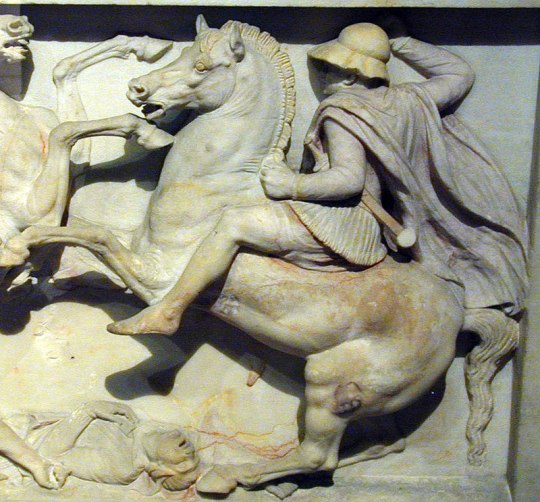
As a chieftain level society, Macedonia operated on “rule by clan” with the king being the senior male Argead. His brothers, sons, nephews, and male cousins might all have important roles, as did the women, although theirs were primarily religious and the running of the royal household. Yet royal women could do limited politicking in the way of donations (eurgetisms) to create goodwill, promote the family, or make alliances—as well as (of course) the alliance created by their marriage itself. Most of these roles were informal and ad hoc, rather than titular, if also expected of them. For instance, the king’s wives were just that: king’s wives. The title queen (basileia) wasn’t used until the Hellenistic courts of the Diadochi.
Ancient near eastern courts were more stratified, with more distinct roles. In fact, it seems that Macedon, from Alexander I onward, borrowed offices from the Achaemenid Persian court, including the Bodyguard and the Royal Pages (King’s Boys). So as early as the late Archaic Age, Macedonia looked east for how to formalize a court. Certainly Philip did it well before Alexander. The notion that Alexander’s Persianizing was somehow new is bull malarky.
Anyway, in the ANE, kings tended to fit one of two traditions: shepherd king or heroic king. The Sumerian kings and Hammurabi (Old Babylon) were both examples of the shepherd-king model. Heroic kings began with the Akkadian, Sargon the Great, then the neo-Assyrian kings, especially the Sargonids. Cyrus cast himself as a heroic king, but we see a shift back to shepherd kings with Darius the Great. Another aspect of ANE kingship were three chief expectations: win wars, build big shit, and administer justice.
Due to a much longer tradition of kingship extending from the Early Bronze Age, as you may imagine, these court systems developed much more in the way of formalized structures and offices. If these changed from king to king, at least by Bronze-Age Babylon (Hammurabi), then Neo-Assyria, access to the king was severely curtailed. At least the Persian kings got out and moved around on a sort of “King’s Progress,” but that was to check up on satraps. The average citizen saw them only at a distance. In contrast the Sargonids of neo-Assyria emerged from their palace complexes almost exclusively when going to war.
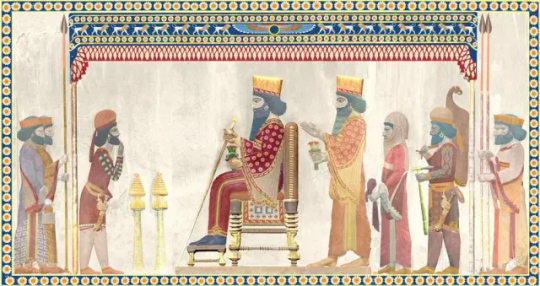
The Medes and Persians, like the Hittites before them, fit themselves into ANE traditions after they arrived in the area. Less is known about pre-ANE Hittites, but if they kept some unique religious traditions, when it came to How to Run an Empire, they used Akkadian and Egyptian precursors. Similarly, the Medes and Persians who came from the steppes, also adopted ANE patterns while retaining some traditions—again particularly religious (Zoroastrianism). We know a wee bit more about them prior; they (like Macedon) seem to have had chieftain-level monarchy with rule by clan, plus tribal princes, before conquering the whole area.
I hope that helps in understanding ancient eastern Mediterranean and near eastern notions of a court. We know less about the Odrysian Thracian and Illyrian kings to Macedonia’s north, but I suspect they were similar to early Macedon. Just tooling around Thrace, it was very clear to me that we’re looking at a shared regional culture between that area and Macedonia. Similar vibes attended my visit to Aiani (ancient Elimeia) and Dodonna (Epiros). I didn’t get up into Illyria, but what I do know of the archaeology suggests the same. ALL these cultures, despite the ethnic and linguistic differences, influenced each other. Yes, ancient Macedonia was at least “Greek-ish,” but we can’t and shouldn’t dismiss the impact on them from their northern neighbors.
Last, let’s consider the role of royal polygamy. Well back into the Bronze Age, ANE kings might marry several wives and also kept concubines for political purposes. That’s why we call it royal polygamy, not just polygamy. Royal polygamy might exist in a society that otherwise limits the number of wives anyone not the king can have.
Macedonian kings also practiced it, and Thracian and Illyrian, but on a more limited scale. Greeks and Romans, then Christians, depicted any polygamy as a “barbaric Oriental” (= morally corrupt) practice that supported their general view of Asia as soft and indulgent. (Sex itself wasn’t a vice, but too much sex was: uncontrolled desire.)
In later Europe, kings might have mistresses, but it wasn’t “official,” and they certainly didn’t have multiple wives. Christianity frowned on that. Even before, Roman emperors didn’t employ royal polygamy, although they did use serial monogamy—a long-standing practice back into the Roman Republic. Yet that required divorce. When the Christian church made marriage both a sacrament and a vow (not a contract, as it had been pretty much everywhere else), they made divorce impossible without either a wife’s death or religious shell games like annulment. Until Henry VIII, European kings were largely stuck with just one marriage.
Ancient courts didn’t have that problem. And from a political point of view, monogamy is a problem. It reduces the number of political ties available. Having royal polygamy offers more fluidity in possible heirs, and increases, sometimes exponentially, avenues for political alliance.
That said, the downside can be messy inheritance. Two of the more infamous inheritance disputes (other than Alexander’s) involved Esarhaddon, youngest son of Sennacherib, and Cyrus the Younger vs. Artaxerxes II. The latter dispute resulted in civil war (thank you, Xenophon, for telling us about it). As for Esarhaddon, he was so in danger from his older brothers, his mother kept him out of the capital until claimants were dead. There are others, but these two leapt to mind. There are also Egyptian examples, but I’m far less knowledgeable about those dynasties. And, as we see later in Europe, disputed successions can occur without polygamy!
Anyway, when it comes to selection of the heir, two things that matter in polygamous courts: status of the mother, and (for the ANE) whether she was queen. Not all wives were also queens. In the case of Esarhaddon, his mother Naqiʾa was of lower status and not a queen, so when his father named him heir, his older brothers (and their court allies) blew a gasket. Both Assyrians and later Achaemenid Persian kings could marry as many women as they wanted, plus take concubines…but the heir was expected to be from his Chief Wife, or Queen. Of “pure” blood. Cyrus the Younger’s argument against his older brother rested on a similar status technicality: he’d been born after his father became king, while Artaxerxes II was born before. We’d say Cyrus was “born to the purple.” But it was just an excuse; he was the ambitious one, and their mother favored him. If Macedonia didn’t have queens, the status of the mother mattered to being selected as heir there as well.
So these are some of the chief differences between ancient Mediterranean and near eastern courts, compared to later European.
#asks#Alexander the Great#ancient Macedonia#ancient Macedon#ancient Persia#ancient Assyria#ancient Babylon#court societies#ancient court societies#Macedonian court#Philip II#kingship in the ancient near east#kingship in Macedon#Classics#tagamemnon
19 notes
·
View notes
Text


TUH'U (c. 1740 BCE)
The next Tasting History dish I had to try was Babylonian Tuh'u, a beet and lamb stew. The recipe for this dish is from the Yale Tablets, ancient Mesopotamian cuneiform tablets from 1740 BCE held at Yale University. According to these tablets, Babylonians loved eating stew - this stew recipe was just one of many stamped into these tablets. Max really liked Tuh'u when he made it, and even said it wouldn't be out of place on a modern menu. It's very impressive to see the Babylonians making meals with complex flavour combinations that can even please the palatte of people thousands of years in the future. See Max’s video on how to make it here or see the ingredients and process at the end of this post, sourced from the Youtube description of the video.
My experience making it:
I made a simple change or two from the modern recipe below. I used beef instead of lamb, mainly because the butcher I usually source lamb from was closed this week (and it's otherwise hard to find where I live). Further, I didn't end up using any of the water that Max lists in the ingredients. In terms of beer, I used Erdinger Weißbier, since it is very easy to find where I live. Unfortunately, sour beer is much harder to find, so I didn't consider using it.
In terms of preparation, this recipe requires lots of chopping (meat, onion, leek, shallot, arugula, cilantro...) and a little bit of grinding in the mortar & pestle (cumin seeds and garlic). I was very excited to use my new mortar & pestle, I love it already! The cumin seeds smelled divine while I was crushing them. Due to the long simmer time, the recipe took me about 1 hour and 30 minutes to make. The broth doesn't really thicken like a normal stew, so I decided to leave a little liquid and not boil all of it away, as the broth usually retains lots of the flavour. Due to the beautiful colour of the beets and the pops of fresh green from the cilantro, this dish was visually pretty to look at once it was served. The result was, like Max said, a dish I could definitely see being served in a restaurant today. The Babylonians had good taste!
My experience tasting it:
I tried this one on my own since my husband got home from work pretty late. The first bites were full of flavour - particularly the cilantro's. The texture and pop of flavour from the dried coriander seeds were also present, as well as the cumin, onion, and beet flavour. The beef didn't add much flavour, but definitely soaked up the flavour of the dish like a sponge. I enjoyed every bite of this one, and even saved some for leftovers to have at work. I had a feeling I would like this dish, because I like all the ingredients, and especially beets. I wasn't so sure if my husband would like it, but when he got home, he enthusiastically finished his bowl at record speed, exclaiming at how good it was in between spoonfuls. We both agreed it is the best historical dish I've made yet, and the best dish I've made in a while otherwise. I would actually consider sharing this recipe with friends, especially since the ingredients are fairly easy to find, and the process is fairly simple. Not to mention, the outcome was delicious! If you end up making it, if you liked it, or if you changed anything from the original recipe, do let me know!
Links to harder-to-find ingredients:
Cumin Seed
Coriander Seed
Tuh'u original recipe (c. 1740 BCE)
Sourced from the Yale Babylonian Tablets
Tuh’u sirum saqum izzaz me tukan lipia tanaddi tusammat tabatum sikara susikillum egegerum kisibirrum smidu kamunum alutum tukammas-ma karsum hazannum teterri kisibirrum ina muhhi sipki tusappah suhutinnu kisibirrum isarutu tanaddi. Tuh’u. Lamb leg meat is used. Prepare water. Add fat. Sear. Add in salt, beer, onion, arugula, cilantro, samidu, cumin, and beets. Put the ingredients in the cooking vessel and add crushed leek and garlic. Sprinkle the cooked mixture with coriander on top. Add suhutinnu and fresh cilantro.
Modern Recipe
Based on the Yale Babylonian Tablets and Max Miller’s version in his Tasting History video.
Ingredients:
1 lb (450g) leg of lamb (or other meat), chopped in bite size pieces
3-4 tbsp oil or rendered fat
1 ½ tsp salt
2 cups (475ml) water (only to add if needed)
12 oz (350ml) beer (sour beer and German Weissbier preferred)
1 large onion, chopped
2 cups arugula, chopped
3/4 cup fresh cilantro, chopped
2 tsp cumin seeds, crushed in a mortar & pestle
2 large beets (approx. 4 cups), diced
1 large leek, minced
3 cloves garlic
1 tbsp dry coriander seeds
additional chopped cilantro for garnish
Samidu* (1 Persian shallot)
Suhutinnu* (Egyptian leek for garnish)
*These ingredients have no definite translation; the shallot and leek are the best guesses of scholars at Yale and Harvard Universities)
Method:
Add the oil/fat to a large pot and set over high heat.
Sear the lamb for several minutes in the oil until lightly browned.
Add the onions and let cook for 5 minutes.
Add the beets and let cook for 5 minutes.
Add the salt, beer, arugula, cilantro, samidu (shallot), and cumin and bring to a boil.
Mash the garlic into a paste and mix with the leek, then add to the pot.
Lower heat to medium and let simmer for approximately 1 hour, or until the beets and meat are cooked to your liking. Add water if you prefer.
Once cooked, dish it into a bowl and sprinkle with coriander seeds. Garnish with fresh cilantro and suhutinnu (leek).
#max miller#tasting history#cooking#tasting history with max miller#Tuh'u#Babylon#Beets#Beef#Mesopotamia#ancient history#ancient cooking#ancient meals#stews#keepers#18th century BC#beer#Mesopotamian meals#Ancient Babylon#middle east#Asia#Meat
8 notes
·
View notes
Text
of all the questions i thought to trip me up with writing this story, the "did the ancient lost city of akkad probably experience much in the way of thunderstorms?" to be the one that i'd have to pay nasa for to read a paper of even passing reliability
#i figured ''okay well the generally-agreed-upon location is like. vaguely babylon-adjacent so start there''#first hurdle is that there is a babylon in new york and everyone on google dot com is dying to tell me about its weather patterns#second hurdle is the clearly-ai-generated content#third hurdle is ''semi-arid climate with hot summers“ which is like. great! we're getting somewhere#and then you run into the brick wall of ''the climate changing in the middle east probably led to the fall of the empire''#so like. what was the climate before then mister google dot com. what was the climate before.#i thought i knew what kind of climate these cities sprang up within. i thought i already had this knowledge.#i just want to know if thunderstorms were a yearly occurrence or more of a once-in-a-decade rarity! that's all!#why is this a complicated question!
24 notes
·
View notes
Text

Fun fact, I drew this late night at 3AM… I know I probably have a lot of explanations to give for this lore i just made up but this is Bashir’s attire before quitting his ranks and cutting all ties with the Harpies. As you can see the service uniform is heavily inspired by ancient Babylon with a modern-twist. The pilot uniform is kind of similar to his regular one except for the plate carrier and the lack of a metal armour. These are for sitting and operaring the Harpy , never wearing it (unlike Bashir after making his own uniform from the remainings of one lol) For context on the name of the certain place these uniforms are from, it’s his home district, country or whatever (haven’t decided how to call them) Anuerut or Anu’erut (named after the god Anu and erut meaning “wells” in ancient Phoenician) !
More of this? Haven’t decided:]
#art#digital art#my art#digital illustration#artwork#ocs#oc#scifiart#sci fi oc#scifi oc#middle east inspired#middle east sci fi#babylonian mythology#inspired by babylonian mythology#mesopotamia#ancient babylon#pilots#pilot oc
7 notes
·
View notes
Text
#funny#satire#babylon bee#politics#current events#rampant antisemitism#rashida tlaib#nasrallah#nasrallah death#nasrallah killed#middle east#actual inhabitants thrilled#white people with humanities degrees very upset#pro israel#israel#lebanon#hezbollah
3 notes
·
View notes
Text
Direction in Scripture
North: danger comes from here
East: exile from the divine prescence
South: exile and slavery
West: proximity to God
#something to meditate on#east is used the most often#but south is used pretty often as well#north and west are used the least#edit:#because of racism and ethnicism i feel the need to extrapolate#“west” has nothing to do with “The West” and everything to do with the fact that the only think west of Ancient Israel was the sea#so the furthest west you could go was the promised land (too far west and you die. like in god's presense... hmm)#assyria was in the north#babylon in the east#egypt in the south
5 notes
·
View notes
Photo
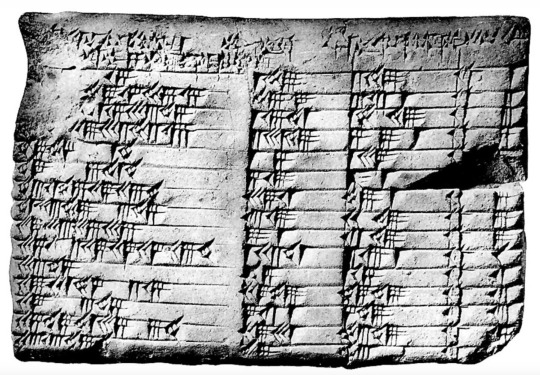
Babylonian tablet listing pythagorean triples (250 BCE)
photo author unknown
#Babylon#PS the Babylonians were aware of the Pythagorean Theorem long before Pythagoras#Babylonians could solve quadratic equations and perhaps higher order cubic equations#This tablet accurately predicts the 60 days that Jupiter's transit is visible from Earth#15 centuries before a similar discovery was made in Europe#Middle East#ancient world#Arab#arithmetic
25 notes
·
View notes
Text
Ea-Nasir’s legal fees.
Idk
#dougie rambles#personal stuff#ancient history#legal fees#my poor attempt at a joke#Babylon#middle east#sumerian#ancient sumeria#assyria#bethnahrin#akkadian#ea nasir#history#shitpost
2 notes
·
View notes
Text
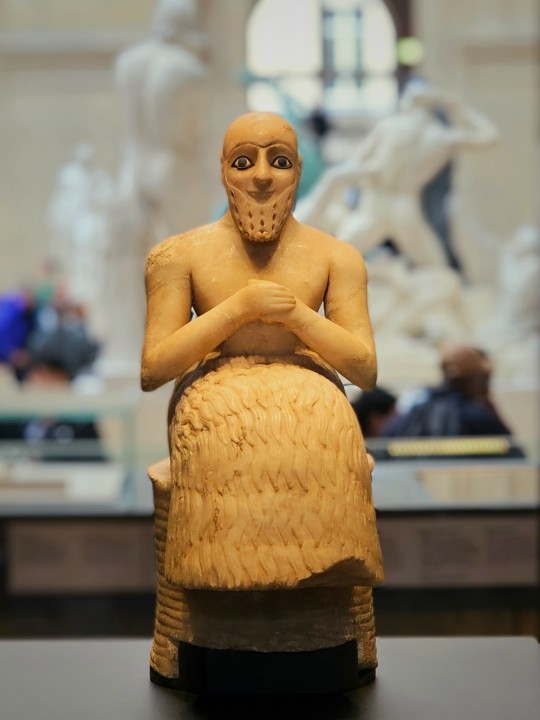
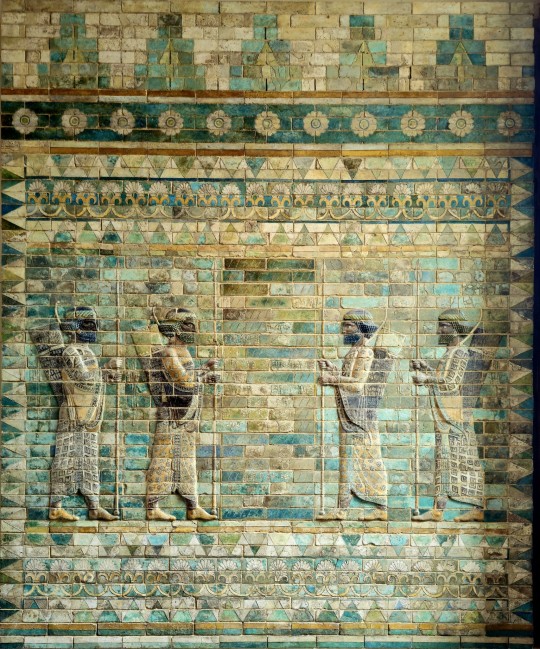
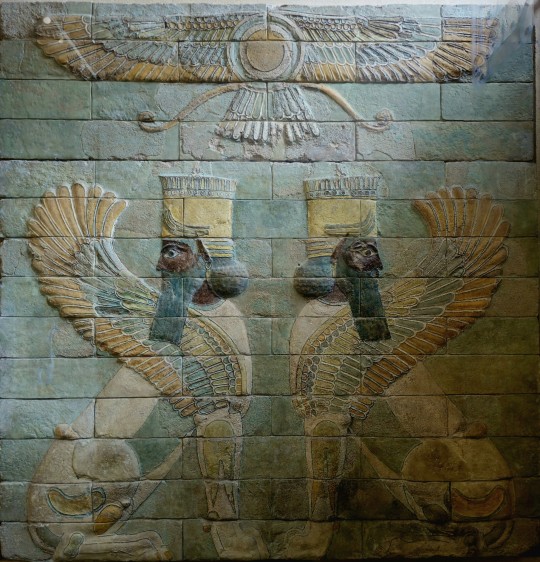

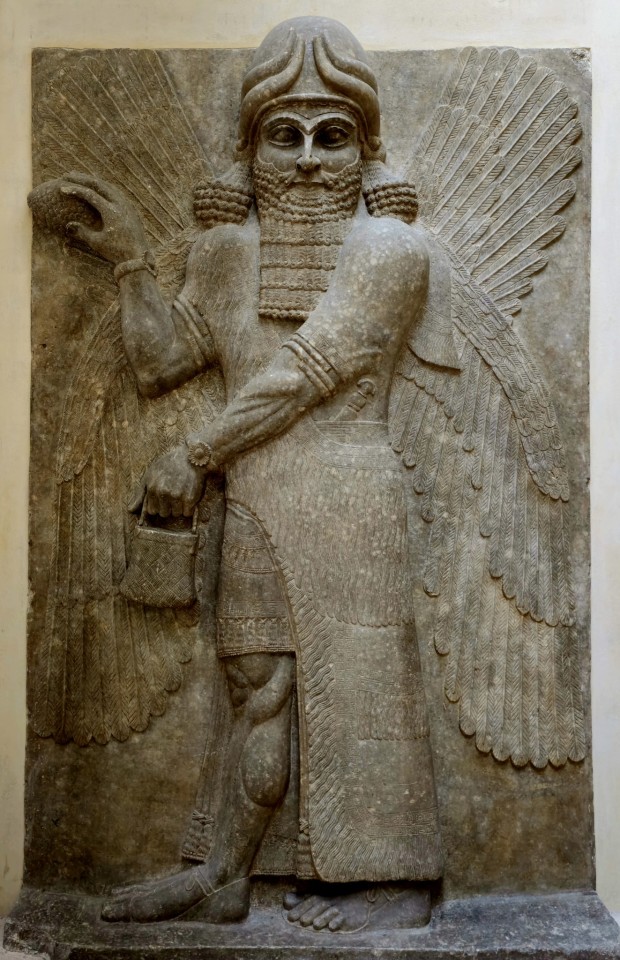



An afternoon at the Louvre
5 notes
·
View notes
Text
Happy Holidays from Stone Creations of Long Island, Deer Park, NY 11729
Wishing everyone a season filled with joy, laughter, and cherished moments with loved ones. Happy Holidays from all of us @ Stone Creations of Long Island • Thank you for your continued support & loyalty.

View On WordPress
#"Amityville Patio Pavers 11701"#"Massapequa NY 11758"#"Port Washington NY 11501"#11211#11579 Sea Cliff Home Improvements#11596 Williston Park NY#11705 Bayport Outdoor Kitchens#11706 Bayshore Patios#11707 Babylon Outdoor Living#11716 Bohemia Pavers#11720 Centereach Patios#11732 East Norwich Patio#Albertson N.Y 11507#Bethpage N.Y 11714#Cambridge Ledgestone#Cambridge Paver Walkways#Carle Place N.Y 11514#Cedarhurst N.Y 11516 Outdoor Kitchens#Curb Appeal Roslyn NY 11576#Deer Park NY 11729#Fireplace#Freeport N.Y 11520#Garden City N.Y 11530#Home Improvements#Home Improvements-11357#Landscape#Landscaping#Long Island#Long Island Cambridge Pavers#masonry
3 notes
·
View notes
Text
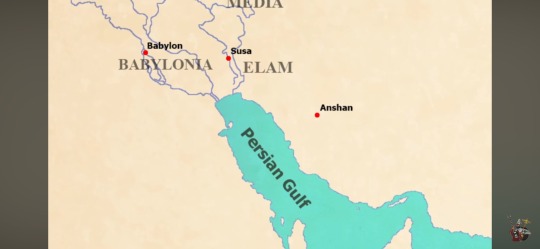
2 notes
·
View notes
Text
Now on YouTube: "The Late Bronze Age Mediterranean. An interview with archaeologist Hüseyin Çınar Öztürk"
A fun chat from remote teaching days for those wanting to scratch that archaeology itch Hüseyin covers the big picture: the archaeology, languages, and political geography of the Eastern Mediterranean in the Late Bronze Age From Mycenaeans to Hittites to Assyrians, shipwrecks and trade and even jokes about my (awesome) hat, this interview's got it all!
Share & subscribe. I've got a fab new series coming this summer
youtube
#archaeology#history#ancient near east#babylon#egypt#hittites#mycenaeans#aegean bronze age#linguistics#Youtube
3 notes
·
View notes